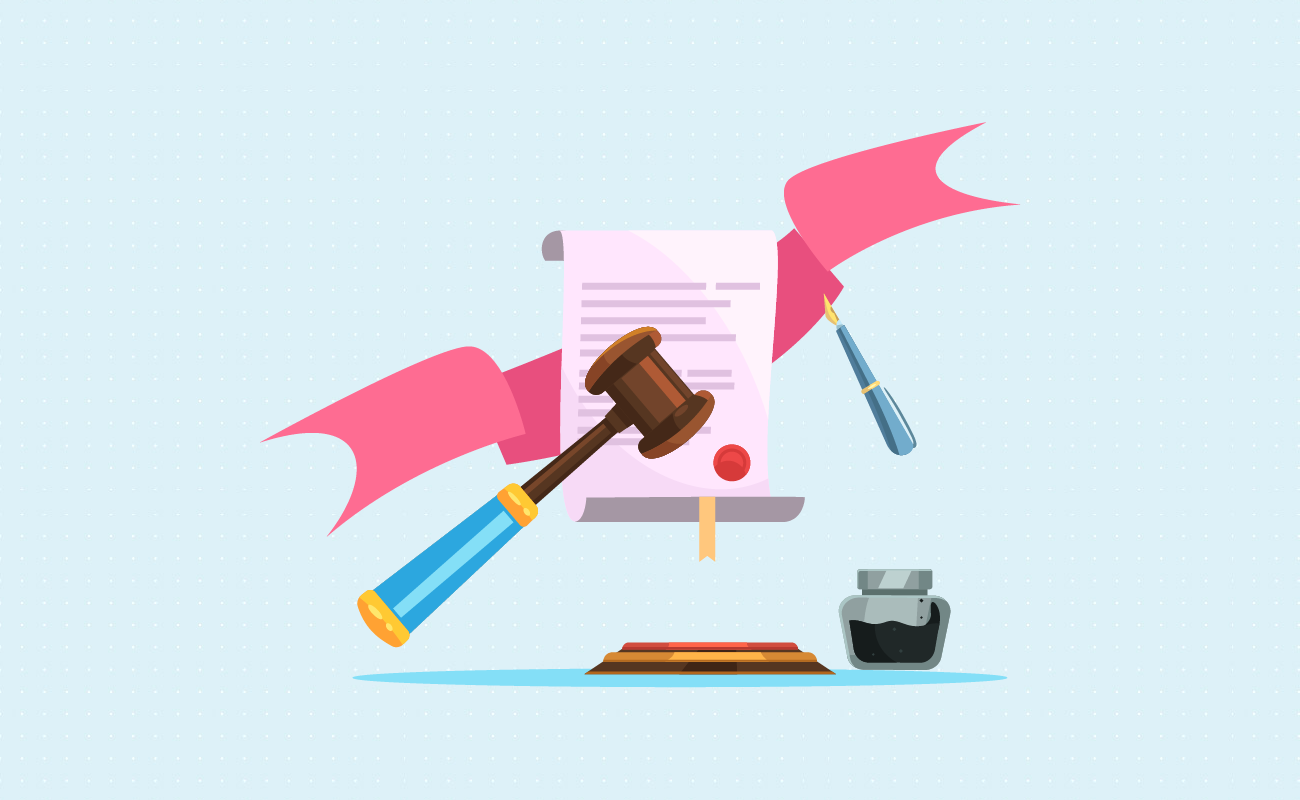 Business Calculator
Business CalculatorGuide published by Jose Abuyuan on December 15, 2020

Math lies at the heart of business. Founding and growing a business demands a careful analysis of numbers. Each decision you make must be informed by numbers. Are there ways you can boost your company’s profits? Are costs worth the revenues they bring in? Doing your math can help you answer these and other essential questions for your venture.
For many, running the numbers is a difficult undertaking solely because there are a lot of them. Even a math whiz can find the number crunching involved in a business challenging. Moreover, time is as valuable a resource as any other. The more time you dedicate calculating figures, the less time you’ll have for anything else.
Thankfully, the internet provides an abundant number of calculating tools available for free. With these tools at your disposal, you can make informed decisions on your business fast.
Everything your math teacher told you about the importance of math is true. And nowhere else is this clearer than in business and finance. The average person must do a lot of math to secure their own finances and build wealth. Business owners take this up to eleven. The entrepreneur never goes a day without considering a lot of math. The risky nature of running a business demands it.
Mathematics and entrepreneurship have a long and intertwined history. Complex calculations began when people needed to keep track of their stored goods. As time went on, artisans and traders needed more than a mathematical system. They needed to make the process of tracking their profits quicker and easier.

This spurred the creation of calculating devices to manage the minutiae of business. Early calculators such as the abacus became the forerunner of today’s modern computers. The word “computer” itself comes from one of many synonyms of “calculate.” Today, the modern merchant remains indebted to calculators to make crucial business decisions. You can learn more about calculators and how they were developed on our Complete History of Calculators page.
The essential calculators you’ll need come in two flavors: basic and scientific. Basic calculators focus on common arithmetical operations. They serve to streamline the process of running the numbers, especially if you’re still writing them down by hand. Scientific calculators contain several other operations. Among these functions are exponents, which are crucial for advanced business calculations.
In the past, these calculators had to be bought as physical devices. While basic calculators are cheap and common, specialty calculators could get pricey. Today, you often wouldn’t need to buy them. Many smartphones contain calculator apps that have basic and scientific modes. You can also use our online scientific calculator which works on your browser.

Many basic and advanced mathematical functions can also be found in spreadsheet programs. Common programs of this type include Microsoft Excel, Google Sheets, and PlanMaker.
But even with these tools, running the numbers by hand can be a tedious affair. The time used to memorize formulas and functions could be used for things more pertinent to your business. And things can take a turn for the worse if you aren’t good with numbers. This steep learning curve can weigh down your entrepreneurial aspirations.
When things get too complex, you’ll need the right tool for the job. Specialist calculators can simplify these tasks. These calculators are planned around a specific formula. The only thing you need to do is know the figures involved. This cuts the time it takes to run the numbers on an assortment of figures. Many online specialist calculators are also free to use. Thus, they are an excellent resource for new entrepreneurs with limited capital for business solutions.

This is the most tenuous part of a business’ life cycle. The venture is new and dependent on the choices made by its founder. And with few resources to spare, the founder must make wise decisions to foster growth.
The first major decision you must make is planning the budget for your enterprise. List down the basic expenses expected when setting up your venture. Tally the costs using a spreadsheet program of your choice. You may need to refine your budget and reprioritize expenses to get things working.
To give you an idea on what to expect, mosey on over to the Small Business Association’s website. Its small business startup guide’s sample worksheet outlines the typical costs of building an enterprise. Remember, not all businesses function the same way. Brick-and-mortar shops will have needs that online-only businesses do not. The costs of these needs can sometimes have a profound effect on the way you budget.
Once you know the costs of your proposed business, you can run a feasibility study on it. Compare the costs of your enterprise to the profits it can make. How much will your products and services cost to break even? How much revenue should it generate before it becomes profitable? These two questions will affect every aspect of your business from operations to pricing.

Don’t quit your day job (yet). Keep an alternate source of cash flow open when you start your business. If you need to pay close attention to your new venture, don’t fret. Ideally, your side job should be flexible enough to give you more time for your venture.
Now that you’ve tallied your costs, it’s time to go financing. Identify how much money you’ll need to borrow before going to the bank for a loan. If you can’t find an investor, your two choices are usually bootstrapping or borrowed funds. Starting a business on debt is a risky move. If your venture fails to take off, you’ll have nothing to show for it but bills.
Bootstrapping involves starting a venture from only the funds you have on hand. By paying for all your initial business costs out of pocket, you can get your business going rather fast. Be careful, though. This process, called bootstrapping, can be quite a stressful experience. You risk running yourself haggard.
Entrepreneurs who bootstrap have been romanticized to an extreme degree. People sing praises of workaholic entrepreneurs who build businesses while having day jobs. While far from a romantic image in real life, bootstrapping has its advantages. By eschewing outside funding, you free yourself from debt obligations and the deadline for profit that comes with it. It’s harder to do, but it pays off well.
Even if the business flops, you incur very little debts. A challenge for bootstrappers, however, is the costs of starting up. Because of limited budgets, they cannot afford what other businesses take for granted. Instead, they must get creative with the tools they have on hand. Many rely on an arsenal of free tools. Many of these services, such as our calculators, can be accessed over the internet.
As admirable as avoiding debt can be, it may not be the best option for your business. To grow and take advantage of opportunity, you may need an extra influx of liquid cash. To reduce the risks of defaulting, it pays to know how much you need to borrow. Define the amount of funds you need to secure your business.
Decide the budget you can allot for your monthly payments. Pick a loan whose terms can fit in your budget. Be careful about lengthening the terms of your loan, however. You may shrink your monthly payments this way at first. But in the end, the longer term may lead to higher interest payments. You also need to contend with extra fees. Pigly’s loan calculator lets you examine all the costs associated with your loan.
Another way to avoid risking default is to borrow a little at a time. Opening several loans in rapid succession can leave you trapped in debt. Borrow only when your business demands it. By restricting the times you can borrow money, you don’t only avoid excess debt burdens early on. You also ensure that your credit lines remain open for when you need them.

When bootstrapping or relying on investor money, it pays to think in tranches. A tranche is a budgetary allotment of seed money. One way to use these wisely is to make small bets on minor improvements to your enterprise. Examine which ones are successful and build on them. A little experimentation and a lot of market research can make your seed money go further.
Whether you should lease or buy equipment is a critical decision for your enterprise. Which option is best will vary, depending on the needs and nature of your business. Some enterprises can get along fine by just renting much of their equipment. Others need to include the cost of equipment into their budgets right away. There are several benefits and drawbacks to both options. Let’s look at leasing first:

| Pros | Cons |
|---|---|
| Leasing or renting equipment each month costs less up-front than buying. | Your equipments’ owner may put inflexible restrictions on its use. |
| Your business does not need to contend with periodic maintenance. | Securing an affordable lease might be difficult for new companies. You may need to pay interest along with your lease. |
| It is much cheaper to upgrade to newer models if you lease them. | You are limited to the models available from the equipment leaser. |
| You can use the lease as a tax deductible, depending on your situation. | You don’t own the equipment. Thus, you can’t add its value into your business’ net worth. |
| You are not saddled with the costs of depreciation and selling the equipment second-hand. | Rental equipment may not always be ready for use. Waiting for availability can delay your project. |
Leasing is a good option for fledgling companies with fewer resources. This lets you use your starting capital for other, more important expenses. Besides this, you also keep your credit lines open. If you don’t need to borrow money to buy equipment, you don’t need to borrow money. Leasing equipment is also ideal for things you don’t need on a regular basis.
Moreover, technology is far from static. Leasing key equipment ensures that you receive the best technology available. This can help reduce the costs of constant upgrades. To find out the costs of depreciation, check out this asset depreciation calculator. Meanwhile, you can examine the costs of leasing through this equipment lease calculator.

Now let’s look at what equipment ownership offers:

| Pros | Cons |
|---|---|
| You own your equipment. You and your employees can use it as you see fit. In addition, you also have full control on how your equipment will be maintained. | Owning equipment outright costs more up front. You also must contend with ownership costs such as storage and regular maintenance. |
| The value of the equipment adds to your business’ net worth. | You are stuck with the equipment you’ve bought for a long time. Upgrading becomes a costly luxury. |
| Equipment you own is always available for you to use. You can get started on a new project straight away. | You miss out on the tax deductible benefits of renting equipment. |
| You can always buy the right equipment model for your needs. | Equipment depreciates in value. When time comes to dispatch them, they have already lost value. |
| There are tax incentives for owning expensive equipment. | |
| You don’t need to navigate complex contracts involved with leases. |
Ideally, you should own equipment if the costs and benefits skew in favor of ownership. This includes when you or your employees use the equipment on a regular basis. It also makes sense to own if your equipment is very particular with your needs. You’d want that specific tool to be available on a regular basis.
The cost of equipment is also justified by the length of time you would need it. Equipment that you wouldn’t need to upgrade will serve you well for several years. Ever wondered how long it’ll take for your equipment to pay for itself? Part of the challenge of business is choosing options based on their short and long term costs. Before making big decisions like these, run the numbers by the return on investment calculator from the Corporate Finance Institute.
As long as you can manage it well, debt can be an excellent tool at your disposal. Part of the challenge of relying on debt is paying it back on time. Minimum debt payments can take up a lot of your revenues. Your enterprise might find itself in a financial quagmire that is very difficult to get out of.
Debts can be divided into two parts:
The amount of interest you must pay is determined by the rate and varies over time. Pick the loans with the smallest rates and the shortest repayment terms. They may have higher monthly payments, but they are cheaper in the long run.

Before borrowing money, you must know how much debt you can pay in your budget. Plan around each debt and fit them into your tally of expenses.
You must keep track of your company’s debt service coverage ratio to ensure that it can pay its debt obligations. This is the difference between total debts (both principal and interest) and your revenues. The revenues used in this calculation is the value before taxes, amortization, depreciation, and interest. Some businesses remove capital expenditures from the mix. Drop by Calculators.org’s debt service coverage ratio calculator to find out your business’ present ratio.
A ratio of one and above is a good sign. This indicates that your business makes enough money to pay off your debts. The bigger the ratio, the more debts the business can take on. Another vital thing to look out for is how the ratio changes. A growing ratio is a good sign, showing that your business is paying its debts well. A shrinking ratio, on the other hand, is a cause of concern. This means that you either have shrinking revenues or growing debts.
Business credit cards are an easy and convenient way to pay for business expenses on the go. They are also easier to apply for than other lines of credit. It’s tempting to rely on credit cards to help your business get by. You can also use cards to help you build credit for bigger loans. Finally, interest on business credit cards is a tax deductible expense.
However, credit cards come with high annual percentage rates. Unless you clear their balances, your debts would continue to compound. This can put you and your business at risk of toxic debt issues. Business credit cards also come with expensive annual fees. If you must use a business credit card, use it with care. Pigly’s credit card amortization calculator can help you work out a strategy for effective credit card bill management.
If you’re disciplined enough, you can use a business credit card to pay for all your everyday expenses. Paying through a card combines most of your expenses into one, large bill. If you pay this bill all at once each month, you don’t need to pay any interest at all.
Another way to keep your business above the water is to consolidate debt. This involves paying all your other debts from the proceeds of a bigger loan. This way, you can focus all your repayment efforts, including extra payments, on a single debt. Debt consolidation is one of the most extreme ways you can manage debt. It can make it easier to pay off debts without severely affecting your credit ratings. However, consolidation doesn’t solve your financial situation altogether.
Another alternative is accelerated debt repayment. This option involves putting all your extra payments toward one debt at a time. For smaller debts, this method simplifies your debt management without any added costs. Larger debts are much harder to pay off through this method.
Accelerated debt repayment comes in two flavors: snowballs and avalanches. The debt snowball method involves paying your smallest debt obligations first. The debt avalanche method pays off the debt with the highest interest first. Of the two, the avalanche method will yield the best financial outcome as it saves you the most money. In practice, you may need to mix the two techniques.
Compare each option through Pigly’s debt consolidation and accelerated debt repayment calculators.

If your business owns real estate, debt can work to your advantage. Mortgages remain the same on paper, regardless of inflation. Over time, your business’ profits and your assets’ value will grow along with inflation. Your mortgage, meanwhile, is paid with the value of yesterday’s money. Thus, your mortgage should be the last debt you should put in the chopping block.

Every enterprise needs a place to operate. For many, the biggest expense is the cost of leasing a commercial space. The location must justify the cost of the lease. Austin Tenant Advisors provides a commercial lease calculator to help you work out the whole cost down to the square foot.

Remember, one option is no option. When looking for a spot for new business, get as many potential locations and their rents as possible. This way, you can compare spots and determine which spot offers the best location at the best price.
When your business is moving on up, it might be more helpful to own its physical location. To do this, you might need to take out a mortgage to buy business property. Business mortgages have specific guidelines for their use. To qualify, your business must occupy 51 percent of the property. Otherwise, you must get a mortgage geared for investment properties.
There’s more to consider about commercial mortgages than their monthly payments. Look at the balloon payments toward the end of their term before settling on a budget. Make sure that you have enough money saved up to clear this payment. Use Pigly’s business loan calculator to find out the true costs of your commercial mortgage.
Not all businesses need a physical location, however. You can, with a little ingenuity, build an entire business within a room inside your home. In the wake of the COVID-19 pandemic, working from home has become the norm for many people. While some have been fortunate to have extra room they can convert, others aren’t as lucky. If you don’t have a lot of space in your house for your business workplace, don’t fret. You can always add one.
If you don’t have enough savings, you must finance your new home office through a loan. How much this will cost depends on the size of the extension. You might not need as much money if you’re converting an existing room. For a full home extension, a larger loan might be in order. Two options include home equity lines of credit (HELOCs) and personal loans.
Here’s how these options stack up:
| HELOC | Personal Loan | |
|---|---|---|
| Advantages | HELOCs are a secured debt. Thus, they are easier to sign up for. They have lower interest rates compared to other loan options. This will depend on your credit score. Depending on the amount of equity you have, you can borrow a large sum of money. HELOCs have tax advantages when applied to home improvement. HELOCs have lower initial interest payments. | Personal loans are amortized. They have fixed minimum payments over the life of your loan payments. Personalized loans come in securitized and non-securitized forms. Personal loans are multipurpose. You can use them for a broad array of business purposes. |
| Disadvantages | These financing options will put your home on the line. You are at the risk of foreclosure if you can’t keep up payments. HELOCs have floating interest rates. These can add a significant sum to their lifetime costs. HELOCs have higher payments later in their lifespan. | Personal loans have higher rates than lines of credit loans. Their interest costs are much higher the longer they last. Personal loans are harder to apply for. Because they are amortized, personal loans do not allow partial payments. |
| Ideal For | Home office expansion | Major one-time expenses and debt consolidation |
We normally discourage the use of HELOCs for business purchases. Businesses are too risky a venture to put your house on the line for. The odds are also stacked against new enterprises. About 70 percent of businesses close within the first ten years of operation. Thus, it is better to choose less risky sources of financing.
The one exception is for home businesses. A HELOC can be a useful source of funding for a home extension, which is tax deductible. Even if your business folds, you will still find uses for that home workspace. Moreover, the home addition will add value to your property. Weigh in for yourself using Pigly’s HELOC and personal loan calculators.
When your business moves on up, it may need to invest in a new property. Reduce the costs of reinvesting by selling properties through 1031 exchanges. These sales help business owners and investors reduce the tax burdens of reinvestment. You will not need to pay taxes again until you make a permanent exit. Drop by Pigly’s 1031 exchange calculator for more details.
Your business is one of the biggest single investments you can make. You must balance short- and long-term profitability with risk management. The options you choose must have the biggest returns with the least amount of risk.
Present value is key to identifying better options from a financial standpoint. This reversal of compound interest is useful in comparing the value of returns. Pigly’s present value calculator can simplify the process of comparing these options.
To find present value, you must establish a benchmark. For many investors, the benchmark is their savings account. Businesses, meanwhile, use their weighted average cost of capital (WACC) as a benchmark. This is the sum of all returns needed to make an investment workable. To find your business’ benchmark, you can use this WACC calculator.
Another way to assess the value of an option is calculating how much time it takes to make a return of investment. For this purpose, you can use this capital budget calculator. You can use it alongside a present value calculator for the best results.
Businesses exist to fill a need. Your business will continue to thrive as long as it can meet the demands of its customers. Among these demands is price. The pricing you give must match the expectations of your customers while still meeting the needs of profit. Your product must be affordable to your target market while being worth its salt.
Prices do not exist in a vacuum. They will change lockstep with both customer expectations and production costs. Remember, prices affect the desirability of a product, with a few exceptions. After all, you are less likely to buy something if you can’t fit it in your budget. This principle is known as elasticity.
The higher the ratio between the price and the demand change, the more elastic a product is. This goes double if your competitors offer substitute products for less. If your services are very elastic, you might not have a lot of leeway to change the price. You can use this price elasticity calculator to help analyze how well your products sell based on price.
While many goods lose demand as their price rises, not all follow this pattern. Two classes of products tend to defy this logic, but for explainable reasons. Veblen goods refer to a class of products whose demand increases with the price. These are often luxury goods that make a statement of status. These are usually (though not always) high-quality goods that people are willing to pay for.
Giffen goods, meanwhile, are low-quality common goods. These are often cheap, basic goods that are hard to replace, such as staple crops. People will buy them anyway because buyers cannot afford their substitutes. But when it becomes cheaper, people purchase them less in favor of buying other products.
As a rule, prices can only go up. Pigly’s own inflation calculator illustrates this point. You can make a general assumption of how much you can raise your prices to match its previous cost. This way, you can stay profitable without raising eyebrows from your customers.
When setting your prices, be fair to yourself. Do not undercharge for your services. While the customers will prefer cheaper items, they will be as happy to spend for quality. If your product is better than your competitors, why price the same way? Likewise, do not overcharge your customers. Price your items too high and your customers won’t be able to afford it as often.
That said, customers appreciate a good bargain. When you have excess inventory or want to spur demand, you can offer a sale on items to entice customers. The bigger the perceived savings, the greater the demand. Use this sales calculator to find the percentage customers can save from your discount prices.
One of the things to consider when making prices is the cost of breaking even. Breaking even means the costs of production are matched by returns. Once you’re past it, you’ve started making money. As a rule, the shorter and the less effort it takes to break even, the better the deal it is. You can try this break even sales calculator to help you set prices.

Part of running a business is balancing your expenses with your cash flow. To survive, your business’ cash flow must, over the long term, surpass its expenses. Thus, you’ll need to look at each expense up close and determine if they are worth keeping. These become even more important in the early days of your business. Unnecessary expenses can scuttle your business’ ability to flourish.
A key factor in reinvesting your funds is the state of your business. Where can your money give the best returns? Looking at your financial ratios are critical to identifying your business’ areas for improvement. Financial ratios encompass five aspects of business operations:
Understanding these ratios is key to knowing where to make improvements that matter. You can use this data to analyze how well you perform in contrast to your competitors. Moreover, these data sets can reveal noticeable trends in your business’ performance. You can find out in real time whether your actions yielded results. CalcXML’s financial ratio analysis calculator lets you find and analyze these ratios.
Staying liquid is essential to keeping your business running. You’d be surprised how much even short-term expenses can cost. Without liquid cash on hand, you can go into debt long before your revenues come. This can cut deep into your profits. Thus, you must identify how much capital you’d need for your company’s everyday expenses. American River Bank’s working capital needs calculator can help you plan your business’ everyday budget.
Note: Faking injuries to win a tort case is a criminal offense
For something associated with the American court system, cartoonish tort lawsuits are rare. You’re not likely going to lose a case to some joker who blames self-inflicted problems on your business. Courts will throw out the most egregious of these abuses without a second thought. But legal conflict is all but an inevitability. Planning around them is tantamount to keeping your business intact.
The first step, of course, is to avoid getting sued in the first place. Do whatever it takes to avoid criminal negligence. Stay updated on legal developments. Keep your enterprise compliant to the pertinent laws. Get insured to mitigate the impact of legal obligations if things do happen. But staying at the right side of the law is only half the battle.

The other is the ability to defend yourself when people think otherwise. Make adequate preparations to ensure that your business can survive legal liabilities. An important part of this is choosing your legal battles. Not every case will stand in court. Sometimes, you and your legal opponents know this.
One way to do that is to run a cost-to-benefit analysis on each legal engagement. Pursue legal action only if you know you can get something out of it. If you can settle out of court, you should do so unless your case is strong enough. This will vary between lawsuits; consult your business’ legal professional for further details. Meanwhile, compare the costs of lawsuits through Pigly’s post-judgment interest calculator.

Sometimes, it is better to settle out of court, especially if you happened to be right. Even if you win, the case will be way too expensive for either party. Like in poker, you must know when to cut your losses and fold.

The workaday expenses of your business add up over time. And we’re not only talking about the expenses that come on paper. You also lose money by wasting time. Moreover, unwanted interruptions have an emotional toll. The frustration on you and your employees will reflect on your productivity as well.
The ideal way to keep this at bay is to make sure everything runs smooth. Invest in quality equipment that doesn’t break down often. Have a dedicated crew on hand to fix your issues when you’re able. Plopping a little extra on quality can reduce productivity lost to interruptions.
Sometimes, workflow interruptions are necessary. New announcements and major shifts in workflow may merit a meeting. But boring, long business meetings can be as unproductive as untoward incidents. They cause a massive interruption in workflow and leave you with mental fatigue. And if nobody understood anything from it, it’s all in vain. Fewer, more effective meetings are a better way to inform work teams. Analyze the costs of each business meeting through Pigly’s meeting cost calculator.
Another necessary business expense that has a high cost is inventory. You’ll need at least some items in inventory on hand to keep up productivity. It pays to have what you need on hand when you need it. But store too much and you start racking up the costs. You waste space that could’ve gone to storing more of something you need.
You also risk buying too much of something. Products you keep in inventory too long will depreciate. Even if you do unload them, you’ll be selling them at a loss. And that’s if you manage to sell them off while they’re still in their useful life.
Downsizing your inventory to match your immediate needs can cut down on these costs. But managing this is tricky. DinkyTown.net’s inventory analysis calculator can help you assess the inventory you need to meet expected demand.
Big names in manufacturing rely on the just-in-time system to manage their inventories. This remarkable system can reduce your need for a large inventory altogether. For some businesses, this system can work wonders in improving supply chain efficiency. This system orders items only when needed. The key is to receive items on time, no sooner or later.
Besides reducing physical inventory, the system also helps resolve other inefficiencies. Smaller inventories are easier to track, and fewer items become lost or stolen. That said, there are challenges to the just-in-time method, and it doesn’t apply well to all businesses. The key is to ensure a smooth delivery system is in place. Your supplier must make consistent punctual deliveries with little room for error.
Understanding your business’ value is an essential part of making several business decisions. Accurate valuation is essential to getting ample insurance coverage for your assets. It also helps you analyze how much of your revenues you should reinvest into the business. A high-valued business attracts and impresses lenders and investors.
Moreover, your business’ value is an essential element of planning an exit strategy. It’s important to sell your business to a buyer as close to its fair market price as possible. This can help you maximize the profits you receive from your exit strategy.

A business’ value must also be considered when calculating your own personal wealth. Your business could be one of the biggest assets you own!
This business value calculator provides a general overview of your business’ value. The tool can be adjusted according to market condition, creating a reasonable estimate of value relative to the market. For a more detailed picture of your business’ value, talk to a pertinent specialist.
Your business’ value should not be confused with its financial statements. These are records of a business’ transactions in the past and cannot gauge fair market value. These financial statements do provide important insight for potential investors and buyers. They provide a clear idea of the current state of the business’ financial health.
A business has three fundamental financial statements:
These individual sheets serve as a snapshot of a company’s finances at a given time. These are vital to understanding the current state of your business. Want to know if it’s wise to reinvest revenues in improvements or debt payments? These questions and more depend on the current state of your enterprise.
These numbers also matter when looking at growth and exit opportunities. A good first impression from your financial statements attracts buyers and investors alike.
Balance sheets are essential in measuring the financial well being of an enterprise. Assets represent the items owned by the business that have value. Liabilities refer to binding debt obligations. Equity refers to the part of the business you own. This is calculated by subtracting your liabilities from your assets. Your balance sheet’s assets will always equal your liabilities and equity.
These sheets rely on regular arithmetic. Thus, they can be made by yourself in a spreadsheet program if you have the time or patience. You can also use premade templates like CalculatorWeb’s balance sheet calculator and Pigly’s cash flow calculator.

Remember, calculators are computers. As helpful as they are, they are only as good as your input. They also have their limits on what they can process. When using any calculator, ensure that all your data is accurate. Follow all instructions on the calculators to ensure precise results.
Specialist calculators can’t do everything. Time and again, you will need to do some of the calculating yourself. If you find related calculators, you can stagger them to streamline the process. For instance, let’s look at how you can compare reinvestment options for your business. First, use the WACC calculator to find your business’ benchmark rate. After that, you can measure each option’s returns through the capital budgeting calculator. Compare each result via the present value calculator.
Budgeting is as essential for businesses as it is for households. You must parcel out the right amount of money for the right purpose. Everything from expansion to inventory has a running cost. You may find yourself with less revenue available if you expand too much too fast. Be wise with your revenues and disburse them according to your business’ needs.
Much like a household, a business is vulnerable to emergencies. Learn from the mistakes made by others and prepare. Part of your expenses should include provisions for emergency funds. Have enough liquid funds to cover at least one or two month’s worth of operating expenses. These can help tide your business over without relying on debt and government assistance. Save those lifelines for when you really need them.
Your business relies on wise decisions to flourish and prosper. The best entrepreneurs are not blind risk-takers. They make leaps of faith based on what they know from their market. And because markets can change at the drop of a hat, it can be challenging to keep up. Making short work of the math behind your business speeds up your decision making. This calculated risk-taking is essential to helping your business survive and flourish.
Entrepreneurs must balance personal and business needs. Thus, they handle finance differently from the average investor. Drop by our guide on our investing rate of return calculator for more advice on investing as an entrepreneur.
Jose Abuyuan is a web content writer, fictionist, and digital artist hailing from Las Piñas City. He is a graduate of Communication and Media Studies at San Beda College Alabang, who took his internship in the weekly news magazine the Philippines Graphic. He has authored works professionally for over a decade.